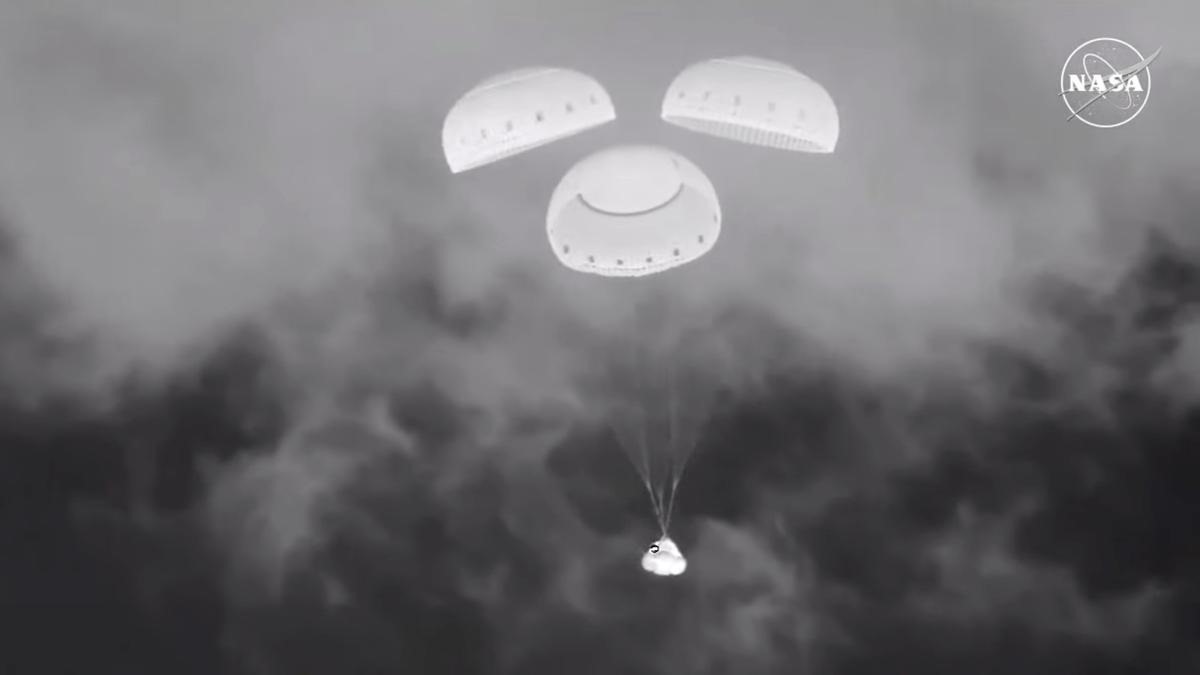Boeing's Uncrewed Starliner Spacecraft Successfully Completes Landing.
Boeing's beleaguered Starliner spacecraft made a successful return to Earth on September 7, 2024, after completing an uncrewed journey back from the International Space Station (ISS). The capsule, which had initially launched with NASA astronauts Sunita Williams and Butch Wilmore, landed at White Sands Space Harbor in New Mexico at approximately 04:01 GMT (10:01 PM MDT on September 6), concluding a critical test mission for NASA's Commercial Crew Program

A Cautious Decision
The decision to return Starliner without its crew was made after NASA identified significant technical issues that posed risks to astronaut safety. Shortly after the spacecraft docked with the ISS on June 6, 2024, helium leaks and problems with the spacecraft's reaction control thrusters were detected. These issues raised serious concerns about the Starliner's ability to safely bring the astronauts back to Earth. Following extensive troubleshooting and analysis, NASA prioritized the safety of its crew and opted to return the Starliner uncrewed
Despite the disappointment of not bringing the astronauts back, the mission was deemed essential for gathering critical data about the Starliner's performance in space. NASA Administrator Bill Nelson emphasized the importance of safety in space travel, stating, "Space flight is risky even at its safest, and this test flight proved to be no exception. Returning the Starliner uncrewed allowed us to evaluate its systems without unnecessary risk."
The Journey Home
The Starliner capsule undocked from the ISS and began its autonomous descent back to Earth. NASA and Boeing closely monitored the spacecraft's systems during re-entry, ensuring that all protocols were followed to facilitate a safe landing. The spacecraft executed a critical 59-second deorbit burn, which slowed its velocity and set it on a precise trajectory for landing
As the capsule descended through the atmosphere, it experienced temperatures as high as 3,000 degrees Fahrenheit. At an altitude of about 24,500 feet, two small drogue parachutes deployed to stabilize the spacecraft, followed by the release of three main parachutes at 8,000 feet. Finally, airbags inflated just before touchdown to cushion the landing impact, allowing the Starliner to land safely at White Sands
Valuable Lessons Learned
Despite the challenges faced during the mission, NASA officials highlighted the valuable lessons learned from the Starliner test flight. Ken Bowersox, associate administrator of NASA's Space Operations Mission Directorate, expressed pride in the team's efforts, stating, "Even though it was necessary to return the spacecraft uncrewed, NASA and Boeing learned an incredible amount about Starliner in the most extreme environment possible."
The Starliner spacecraft will be transported to NASA's Kennedy Space Center in Florida for inspection and processing. The data collected during this mission will be thoroughly reviewed to identify any necessary improvements before the spacecraft can be certified for crewed missions
Future Plans for Astronauts
Although Sunita Williams and Butch Wilmore were left aboard the ISS during the Starliner's return, they are expected to continue their work as part of the Expedition 71/72 crew. They are scheduled to return to Earth in February 2025 aboard SpaceX's Dragon capsule as part of NASA's Crew-9 mission. This adjustment was made to ensure their safe return after the issues encountered with the Starliner
The Road Ahead for Boeing
The Starliner mission faced numerous setbacks, including a previous uncrewed test flight in 2019 that also encountered technical difficulties. However, NASA remains committed to working with Boeing to develop the Starliner into a reliable spacecraft for future missions. Steve Stich, manager of NASA's Commercial Crew Program, stated, "Every test provides valuable data. We're confident that Boeing will make the necessary improvements to ensure Starliner's future success."
The successful landing of the Starliner is a significant milestone for Boeing and NASA, providing a much-needed boost to the program. As engineers analyze the data and work on addressing the identified issues, the focus will remain on ensuring the safety and reliability of the Starliner for future crewed missions.



